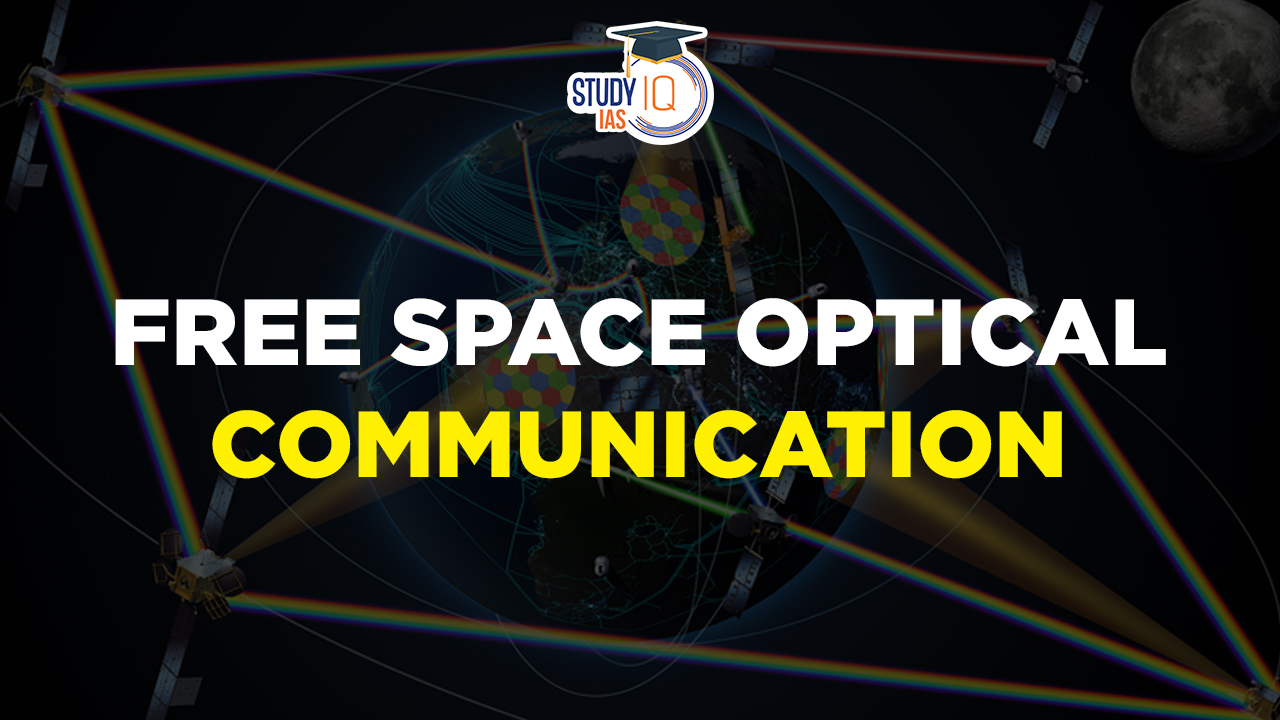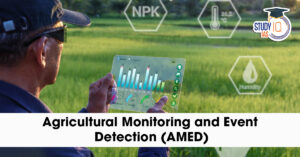Table of Contents
Free-space optical communication (FSO) is an optical communication technology that harnesses the transmission of light through unobstructed space, such as air, outer space, or a vacuum, to wirelessly convey data for telecommunications and computer networking. Unlike traditional methods that rely on solid mediums like optical fiber cables, FSO offers a practical alternative, especially in situations where physical connections are prohibitively expensive or infeasible due to various factors.
We’re now on WhatsApp. Click to Join
What is Free Space Optical Communication?
Free Space Optical Communication (FSO) is a wireless technology that uses light to transmit data through unobstructed space, such as the atmosphere or vacuum, without physical cables. FSO relies on optical signals, often generated by lasers or LEDs, to convey information at high data rates. It requires a clear line of sight between the transmitter and receiver, providing secure, interference-free communication. However, FSO is limited by weather conditions and has a restricted range. It finds applications in last-mile connectivity, space communication, military, data centers, and disaster recovery, offering an alternative where traditional communication methods face challenges or where high-speed, secure transmission is essential.
Features of Free Space Optical Communication
Free Space Optical Communication (FSO) is a technology that offers several key features:
- High Data Rates: FSO systems can provide high data transfer rates, making them suitable for applications requiring fast and large-scale data transmission.
- Line-of-Sight Communication: FSO requires a clear line of sight between the transmitter and receiver. This feature ensures secure, point-to-point communication.
- Secure Communication: FSO is inherently secure because it is challenging to intercept optical signals, enhancing data privacy.
- Immunity to Electromagnetic Interference: FSO is not susceptible to electromagnetic interference or radio frequency congestion, making it reliable in environments with high RF noise.
- Low Latency: FSO systems offer low latency, making them suitable for applications like financial trading and real-time video streaming.
- No Spectrum Licensing: FSO does not require licensing for specific frequency bands, simplifying regulatory requirements.
- Limited Range: FSO has a limited communication range compared to some other wireless technologies, making it suitable for shorter-distance applications.
- Weather Sensitivity: Adverse weather conditions, such as fog, rain, or atmospheric disturbances, can impact FSO performance, reducing reliability.
- Components: FSO systems typically consist of transmitters with lasers or LEDs, receivers with photodetectors, optical links, and weather mitigation techniques like adaptive optics and beam-steering mechanisms to address weather-related challenges.
Types of Free Space Optical Communication
| Type | Description | Typical Applications |
| Terrestrial FSO | Communication between terrestrial points | Last-mile connectivity, urban wireless backhaul, data center interconnectivity |
| Satellite FSO | Communication between ground stations and satellites | Space missions, satellite data transfer, space-based communication |
| Underwater FSO | Communication within bodies of water | Underwater research, subsea exploration, offshore operations |
| Airborne FSO | Communication in aviation and aerospace applications | Air traffic control, in-flight connectivity, military aviation |
| Mobile FSO | Mobile FSO systems for applications requiring mobility | Military communication on the move, vehicle-to-vehicle communication |
| Long-Range FSO | Long-distance FSO communication | Long-distance connectivity |
| Short-Range FSO | Short-distance FSO communication within urban areas | Point-to-point connectivity in urban settings |
| Inter-Satellite Optical Links (ISL) | FSO communication between satellites | Satellite networks, Earth observation missions |
| Secure FSO | Emphasizes security and encryption | Military, defense, sensitive government applications |
| Commercial FSO | Business and commercial FSO applications | Telecommunications, internet service provision, enterprise connectivity |
| Emergency FSO | Rapid deployment for disaster recovery | Ensuring communication continuity during emergencies |
Applications of Free Space Optical Communication
Free Space Optical Communication (FSO) finds application in various sectors due to its unique features. Some of its key applications include:
- Last-Mile Connectivity: FSO can provide high-speed internet access in urban and suburban areas where laying physical cables is impractical or cost-prohibitive. It’s useful for connecting homes, businesses, and remote locations.
- Space Communication: FSO is employed in space communication systems to establish links between satellites and ground stations. It enables data transfer from space probes, telescopes, and other spacecraft.
- Military and Defense: FSO is used for secure and high-bandwidth communication in military applications. Its immunity to interception and low latency make it valuable in tactical and strategic scenarios.
- Data Center Interconnectivity: FSO can be used to establish high-speed, low-latency links between data centers for efficient data transfer and redundancy.
- Disaster Recovery: FSO serves as a reliable backup communication method during disasters or emergencies when traditional communication networks may be compromised.
- Aerospace and Aviation: FSO is used in aviation for secure and high-bandwidth communication between aircraft and ground stations, improving air traffic control and in-flight connectivity.
- Urban Wireless Backhaul: FSO can serve as a wireless backhaul solution for urban and metropolitan networks, connecting cell towers and providing high-speed data transfer.
- Surveillance and Security: FSO is employed for secure data transmission in surveillance systems, including border security, perimeter monitoring, and city-wide camera networks.
- Broadcasting and Entertainment: FSO is used for high-definition video and audio transmission in events, live broadcasting, and entertainment venues, where low latency and high bandwidth are critical.
- Oil and Gas Industry: FSO is used for communication between offshore platforms and onshore facilities, enabling real-time data transfer and control in the oil and gas sector.
- Healthcare: FSO can be used in healthcare facilities for high-speed data transmission, including medical imaging and telemedicine applications.
- Scientific Research: FSO is employed in scientific experiments and research projects where high-bandwidth data transfer is required.
Free Space Optical Communication in India
Free Space Optical Communication (FSO) is gradually making its mark in India, addressing connectivity challenges and enabling high-speed communication. FSO is employed for last-mile internet access in both urban and rural areas, offering a cost-effective solution where laying cables is difficult. India’s military and defense sector also sees FSO’s potential for secure and efficient communication. FSO aids data center connectivity, disaster recovery, and urban wireless backhaul, while research institutions explore its applications. However, FSO is sensitive to adverse weather, posing challenges during monsoons and foggy conditions. Nonetheless, FSO’s unique advantages make it a promising technology in India, bridging the digital divide and enhancing connectivity.
Free Space Optical Communication UPSC
Free Space Optical Communication (FSO) uses light to transmit data through unobstructed space, providing secure, high-speed communication. It finds applications in last-mile internet access, military, data centers, and disaster recovery. However, FSO is sensitive to adverse weather conditions and requires a clear line of sight. In India, it addresses connectivity challenges and has been adopted in various sectors, particularly in last-mile connectivity, data center interconnectivity, and defense. While FSO has potential, its reliability can be affected during monsoons and foggy conditions. Despite challenges, FSO’s unique advantages make it a promising technology in India, enhancing connectivity and bridging the digital divide.


 DRDO and Air Force Successfully Test Ind...
DRDO and Air Force Successfully Test Ind...
 India AI Mission, Purpose, Significance ...
India AI Mission, Purpose, Significance ...
 Agricultural Monitoring and Event Detect...
Agricultural Monitoring and Event Detect...





















